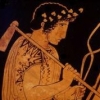Leaderboard
Popular Content
Showing content with the highest reputation on 2015-02-09 in all areas
-
I think the Thomas Theorem applies here: If men define situations as real, they are real in their consequences. In other words: When men believe in gods, there are real and physical consequences. On the other hand, looking at Europe right now, I'm happy for every little space where gods don't play a role. Even if that place is called 0 A.D.....3 points
-
I have an idea that could give a lot of fun. I think that every faction could have four gods in their temple, for example, in Rome, they could be Mars, Minerva, Jupiter and Juno for say someones. When you build the first temple a message would be shown which enables you to choose one god, the name of the temple change at God's temple (depend of the god) and you were given a bonus.Of course, this bonus wouldn't be too exaggerated. I think this would become the game more interesting in all senses. Some example of gods: -Romans: I put it before -Egyptians: Osiris, Isis, Set, Ra -Gauls: Belenus, Taranis, Esus, Teutates -Britons: Dagda, Morrigan, Lugh, Brigid -Sparta: Athena, Ares, Apolo, Zeus -Athens: Athena, Poseidon, Dionisus, Zeus They could be also aditional technologies depending of the god choosen, like Panathenea whit Athena (Greeks) or Beltaine with Belenus (gauls). What do you think about?2 points
-
You have to play on the attributes given to units if you take away the multipliers they have. You could have a hard counter system like it was done in Aoe3; that would get you very fun unit interaction and micro. In fact when I first got into 0 A.D. about a year ago, I was for the use of a very hard counter system. My arguments were very similar to the one you just gave. However that direction isn't the one taken by the 0 AD project, the way I understand things. I'll come back to unit stats as a way to differentiate units. We can look over a basic example. Let's imagine that we have an archer unit which costs 100 resources. It does 10 damage every shot and it fires once a second (10 dps). It has 100 hp. Now let's take a swordsmen unit. This unit also costs 100 resources, it does 10 damage every second (10 dps). Let's give the swordsmen 200 hp. Which unit is better? The archers with their range or the swordsmen with their health? The answer isn't clear cut, really. If you engage 20 swordsmen vs 20 archers, the swordsmen should win easily. If you have the archers hit and run consistently, the archers might win, however it will take time. Time is a resource in an rts game. You also can't use hit and run when you're defending a position (civic center, resources or map control). Arguably, even if you give the archers more dps than the swordsmen (13-15), the swordsmen would still win a straight up fight due to their HP. This is without multipliers. The strength of the archer resides not in the fact that it is a cost-efficient unit, but it resides in the range it has. If we look at things more broadly, we realize that it's possible to play on the strengths that units have to balance them out. Ranged units can be given range, dps and poor HP. Melee units can be given dps and strong HP. Ranged units caught in a melee fight will lose straight up. Ranged units which act as support for friendly melee units can help turn the tide of the fight. Basically, by playing on the different attributes which units are given, you can give them a certain niche role. A unit which is correctly used in that role will do well, a unit which is mis-used will quickly die. It's kind of like the Mutalisk in starcraft. In Zerg vs Terran, using your mutalisks to fight in a straight up fight is generally suicide. Yet you won't hear a single Terran player who says that mutalisks are a bad unit. Mutalisks were given mobility and damage output. The role they then serve is that of picking off high value targets, workers, cutting off reinforcements and obtaining map control. Mutalisks have no multipliers to help them do extra damage to certain units, yet they still serve a niche role and they're very fun units for that purpose. The same can be said for the Marine. You can easily replicate this in 0 A.D, I modded the game a bit on my own to give units certain attributes like the ones I described, the results were quite interesting. For example, you could give skirmishers high attack, but low attack frequency. The overall dps that skirmishers have make them bad in straight up fights. However, they could hit and run units quite well due to their high attack. This made skirmishers soft-counter melee infantry units. However making an army with only skirmishers would inevitably lead to defeat. All of this can be done without the use of multipliers and I think that this is what scythe is slowly but surely working towards. It's for the purpose of micro that I would like ranged units to always hit their targets. As I've said before, this may be a game where the time setting is set in the Antiquity, but it remains a game. In an RTS, you want your units to be reliable. I don't personally believe that ranged units missing their targets adds anything to 0 AD as a game. I see 0 A.D. as an RTS with huge potential which is in development. I don't quite see 0 AD as a historical simulation. Of course, nothing is wrong with having different views and I respectfully acknowledge your point.2 points
-
I think just "Germanic" would fit. We don't know how they called themselves, since they didn't possess writing and during this period Romans hadn't yet met (Pre-)Germanic peoples to describe them, as they would later on. As for the architecture, here is a reconstruction of a farm of theirs: A house: ...and a longhouse: Here is an interpretation of how a civic center of theirs could look like: ...barracks: ...smithy (this one is partially based on a later smithy, from a reconstructed Germanic settlement in the Danube from the time of the Marcomanni; but adapted to have bronze age weapons and tools): ...and house/farmstead:2 points
-
Yes, I see what you mean. It would be really nice if minifactions and mercenaries were supported, since then it would be possible to "start small" with new factions, instead of needing to create the entire civilization from the first. I think that the units could use the weapons and etc. from the Nordic Bronze Age findings, while their names could be in Proto-Germanic. There is a Proto-Germanic dictionary available here. For instance, a swordsman could use the Nordic Bronze Age broad sword, shield and helmet, and be called "Erala" ("warrior" in Proto-Germanic). This is what was done for the bronze age Germanic units of my game, and here is the result: I suppose that graphics such as these could provide a good reference for the modellers working on Aristeia. These were the swords and helmet used as references to create this warrior:2 points
-
Hello all I discovered 0 AD maybe on alpha 15 or something like that and played sometime to see how things are going. I'm generaly intrested in free software (even coding for some) and pay particular attention to games since a few years. 0 AD is one of my favorites, as it is ambitious, fully original, and truly alive It's also a study case for project management and business model on free games. I'm now working at a game center in France and try to push free softwares there. I already made a few LAN introducing free games and recently ran one dedicated to 0 AD. We were 8 players and there wasn't even enough unused PC for everyone to play (previous events gathered 3 or 4 people) Even if the game was laggy they all enjoyed the games and are demanding for more (fully aware that 0 AD is still in alpha and performance issues will be addressed on time). I'd love to see a local community of players being built on the long run. I'm trying to "contribute" in some way, I'm relaying some announcements on Diaspora* (in French), "learn" (actually play) the game to be able to introduce it to new players and ease the learning curve. I think I should be more attentive on bug reports, testing an such, as I don't think I'll have much time for coding (I already have too many projects)1 point
-
I really love African civs.I'm not specialist but I'm reading about history of Africa from time to time And I think that it's very interesting continent.1 point
-
Hi juanjo, Welcome. This game has the aim of being historically accurate. Since gods are only mentioned in stories rather than physically appearing they had an impact on society (and that's in the game in form of temples and priests) but never physically appeared and/or directly intervened. So they will not get part of the original game. However, you are free to build a mod including gods.1 point
-
I suppose spear cavalry should be excellent for charging (or, since charging isn't implemented yet, able to harrass weak(er) targets easily)1 point
-
Aristeia artist here. Are you sure those swords are accurate ? Also I want to know what license ls your game. ( To avoid copyright infringement if repoducing stuff.1 point
-
I disagree a lot, but respectfully. There really is no reason to train a archer cav over a javelin cav. The players will find the best cost-benefit ratio and just spam those units and ignore the others. Roles are muddy and unclear. I also disagree that ranged units should alwats hit target. If you don't like ancient combat concepts then why play ancient combat game.1 point
-
I loaded up the most recent version of 0 A.D. and played 5 minutes. I really like the fact that multipliers are gone and simplified. I do however feel that ranged units should not "miss". I don't like the concept, I can understand where it comes from but I just don't feel the concept. In an RTS, you have to trust your units to do exactly what you need them to. Whether or not ranged units have too much range or too much dps is something I can't comment on at the moment, I haven't played the game enough to have a valid opinion. I will just say that (for A19, if anything) in my mind, the best working solution for 0 A.D. is giving ranged units a support role. they're good for scouting, they're good for harass, they're cheap, extra dps in a fight. However massing only ranged units will give you an army which is too fragile, which loses. This is the ideal role for ranged units, I feel. Likewise, melee units should be tougher units than ranged. Melee cavalry should be tough and fast, but they should also be more expensive to balance things out. This comes down to numbers and design, however getting rid of most multipliers (except for spear infantry against Cavalry) is, imo, a step in the right direction.1 point
-
I'm only not so fan of the huge range of ranged stuff have these days. It is almost impossible to play on smaller maps. Also I believe that Gaul Fanatics are rather useless now (like every champion spearman) The huge spread of ranged cavalry makes them completely useless to hunt (which I tend to do often if there are enough huntables)1 point
-
One idea would be that Kushites advace phases by building bigger and bigger pyramid tomb.1 point
-
-------- Sun temple at Meroe. http://www.sudanforum.net/showthread.php?t=176227&page=101 point
-
1 point
-
Ah, got it! See leper's changes in r16110, and do the same in your mod with regards to specifying the icons in the base phase techs, and that should solve your issue.1 point
-
The Persian Shah Artaxerxes III's defeat of the Egyptian Pharaoh Nectanebo II in 343 BC marked the official end of an already declining Egypt as an independent nation. From that point forward, Egypt would Kush, once a province of the Egyptian empire, became an independent nation circa 1070 BC. Initially its capital was Napata near the modern Sudanese town of Kuraymah, but between 591 and 300 BC, the capital shifted to Meroe to the southeast. The Greek historian Diodoros claimed that a Kushite Pharaoh named Arkamani, who was influenced by Greek philosophy, made the move after rebelling against a tradition that he must kill himself once his time to rule had ended, but more recent scholarship suggests that the capital change was instead caused by the earlier Pharaoh Aspelta and was motivated by a transition from bronze to iron technology. According to this argument, since Meroe had more trees around it than Napata, it could provide more fuel for blast furnaces. Whatever inspired the change, Meroe had been a prosperous town since the eighth century BC thanks to its position alongside several river and caravan routes linking central and northeastern Africa. Its wealth would increase to an even greater extent once it became the political center of Kush, with its commercial connections extending not only to the Mediterranean and African lands but also Asian nations as far away as India and China. Particularly important to the Kushite economy during the Meroitic Period was a thriving iron industry and the exportation of gold, jewelry, cotton textiles, and animal products such as ivory and big cat furs. However, the Meroitic Kushites, by making use of an animal-powered water wheel for irrigation, were also able to improve their agriculture. Kush's many riches funded many construction projects. Among the monuments built by the Kushites were temples, pyramidal tombs (the Kushites actually built more pyramids than the Egyptians before them), palaces, elaborate underground pipe systems, gardens of fruit trees, Roman-style bathhouses and even what appear to be stables for war elephants. Even though the architecture drew heavily upon Nilotic traditions first established by the Egyptians, Greco-Roman influence is apparent in the columns' designs and the measurements used by the architects. Kush departed from Egyptian traditions in other ways during the Meroitic Period. Beginning around the 2nd century BC, the Kushites replaced the old Egyptian hieroglyphs with a unique cursive writing script that has yet to be fully deciphered. While the Kushite religious pantheon was mostly similar to the Egyptian one, with the creator god Amun being especially important, some new gods, such as the lion-headed warrior god Apedemak, were added. In addition, the Kushites reformed their government so that the Pharaoh, while still an autocratic god-king, had limitations on his power: succession required consent from the nobility and priesthood, an unpopular king could be impeached, and commoners (particularly herdsmen) may have had a degree of political freedom from the central government. Although royal women had always exerted some influence on Nilotic politics, this was particularly evident during the Meroitic Period, which is famous for its powerful Queens and Queen Mothers. An ancient legend claims that the famous Macedonian conqueror Alexander the Great once attempted to invade Kush, but was so terrified by the army of war elephants amassed by the Kushite Queen that he turned back without a fight. Most historians doubt that this really happened, but we do know that the Kushites did fight the Romans centuries later. After Egypt became a Roman province in the first century BC, the Egyptians revolted against Roman taxation policies. The Kushites, ruled by Queen Amanishekhato at this time, took advantage of this by attacking Aswan on the Egyptian border, defeating the local Roman garrison and throwing down statues to the Emperor. The Romans retaliated by sending a legion into Kush, managing to destroy the old city of Napata, but the war concluded with a peace treaty between Kush and Rome that made relations between the two powers generally peaceful until the third century AD. The 4th century AD saw the decline of Meroitic Kush. Why this happened is not fully known, but conflicts with nomadic desert tribes, erosion of the soil by livestock's overgrazing, and depletion of trees for use in furnaces are among the proposed explanations. The contemporaneous decline of Rome may have also been a factor, for Roman legions could no longer protect Kushite trade routes from raiders. Ultimately Kush was conquered by the Ethiopian king Ezana, who converted the Kushites to Christianity and brought their written and spoken language to an end. From that point onward, Kush would no longer be a major civilization. Sources: http://en.wikipedia.org/wiki/Kingdom_of_Kush http://en.wikipedia.org/wiki/Mero%C3%AB http://endingstereotypes.org/ancient_nubia.html http://web.ics.purdue.edu/~rauhn/ancient_africa.htm http://www.ancientsudan.org/history_10_rome.htm http://www.numibia.net/nubia/meroe.htm http://wysinger.homestead.com/amanirenas.html http://wysinger.homestead.com/candace.html http://wysinger.homestead.com/nubianpolitics.html1 point
-
The Kingdom of Kush or Kush (/kʊʃ, kʌʃ/) was an ancient African kingdom situated on the confluences of the Blue Nile, White Nile and River Atbara in what is now the Republic of Sudan. Established after the Bronze Age collapse and the disintegration of the New Kingdom of Egypt, it was centered at Napata in its early phase. After King Kashta ("the Kushite") invaded Egypt in the 8th century BC, the Kushite kings ruled as pharaohs of the Twenty-fifth dynasty of Egypt for a century, until they were expelled by Psamtik I in 656 BC. During Classical antiquity, the Kushite imperial capital was at Meroe. In early Greek geography, the Meroitic kingdom was known as Ethiopia. The Kushite kingdom with its capital at Meroe persisted until the 4th century AD, when it weakened and disintegrated due to internal rebellion. ------------------------------------------ So this people have a remarked New Kingdom influence. Another source. Some detailed http://earlyworldhistory.blogspot.com/2012/03/kushite-kingdom.html The Kushite kingdom flourished in the northern part of present-day Sudan (called Nubia by the Romans) and southern Egypt. From their capital at Napata, the Kushites controlled the trade between Egypt and East Africa and developed into a major military power. Under the leadership of Piy, Kush forces moved into Upper Egypt, conquering Thebes and, in spite of strong resistance, Memphis. Under King Shabako (r. 721-706 b.c.e.) the Kushites established their own dynastic rule over Egypt but retained many of the old Egyptian customs, particularly regarding burials, and adopted the Egyptian pantheon of gods. The Kushites developed their own written language based on Egyptian hieroglyphics, but as this language has yet to be deciphered, much remains to be learned about Kushite history and customs. As the Assyrians conquered the eastern Mediterranean and moved into Egypt, the Kushites were forced to retreat southward into the Sudan where they built a new capital at Meroë, north of modern Khartoum. Controlling the valuable gold mines in the Sudan and acting as middlemen in trade between East Africa and the eastern Mediterranean, as well as Greece, the Kushites grew wealthy. The numerous ruins of temples, tombs, pyramids, and palaces at Meroë and environs are evidence of the prosperity and artistic complexity of the Kushite kingdom. The Kushites also produced high-grade iron for the manufacture of weapons. They may have transmitted their skills in iron smelting and the lost-wax process for bronze casting to West Africa, or that knowledge may have emerged independently in that area. By 300 c.e. the Kushite kingdom had begun to decline as its trade in iron and other products with Egypt diminished. Attacks from the newly emerging kingdom at Axum in present-day Ethiopia further weakened it, and it finally fell to Axum rule in the fourth century c.e. ----------------------------------- I'm not sure if we can open a topic to upload info. But this guy need create and validate document design if is enough interested.1 point
-
Currently, in SVN, the only hard counter is spearmen dealing 2x damage against cavalry. Balancing merged into SVN.1 point
-
Well, as a good example for the current discussion (which is quite out of topic ), you have fogging which was a big feature. However, I had to work on fogging performance until this very week. Including "big" features is nice, having them really working is both necessary and difficult! Back to the topic: I'd like to propose Rododactylos, which is the Homeric epithet associated with Eos, the Dawn, and which literally means "rosy-fingered". I think it suits the release which is a performance update, with a more swift gameplay, so the image of the flower is fine (see also previous release, Quercus ), and the dawn can be related to future new features in A19, and also to the beta that is getting closer. Thoughts?1 point



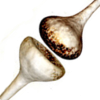

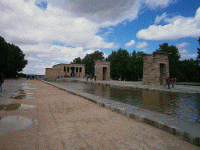
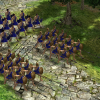


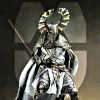

.thumb.png.ce58cea22940c255f5b0a735d5abee36.png)

